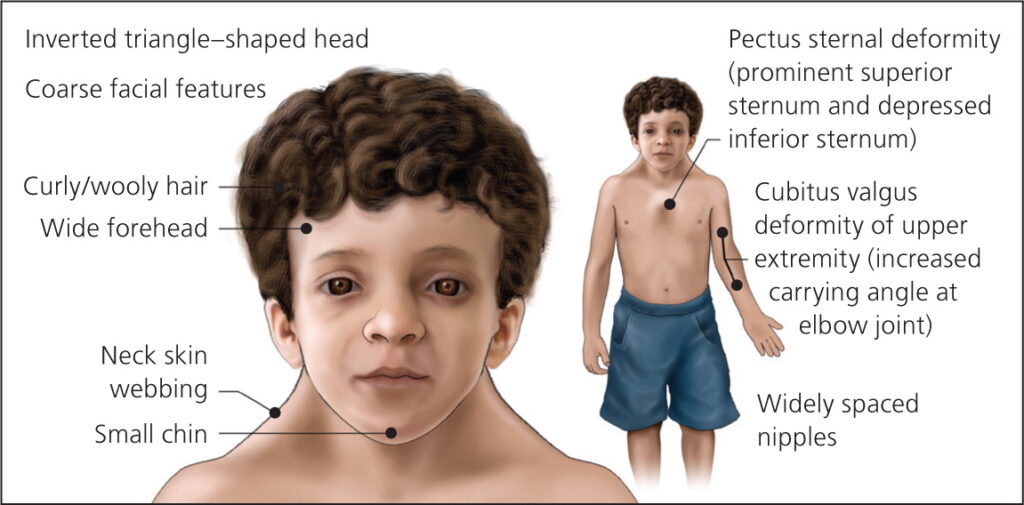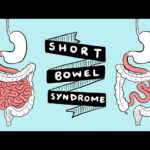Noonan syndrome is a genetic disorder that affects multiple systems in the body, including growth, development, and physical features. One of the hallmark features of Noonan syndrome is short stature, which is seen in the majority of individuals affected by this condition. Short stature in Noonan syndrome is not just a cosmetic issue; it can have significant impacts on a child’s physical and psychological development.
In this article, we delve into the relationship between short stature and Noonan syndrome, exploring the causes, symptoms, diagnosis, and available treatment options. We will also discuss the role of growth hormone therapy and how it can be used to improve growth outcomes for individuals with Noonan syndrome.

What is Noonan Syndrome?
Noonan syndrome is a genetic disorder that causes a variety of physical and developmental issues. It is caused by mutations in certain genes, most commonly the PTPN11 gene, although mutations in other genes such as SOS1, RAF1, and KRAS have also been linked to the condition. This syndrome is typically inherited in an autosomal dominant pattern, meaning that one copy of the altered gene in each cell is sufficient to cause the disorder.
The condition is characterized by a range of physical features, including distinct facial characteristics, heart defects, delayed growth, and short stature. The degree of severity varies from person to person, but short stature is one of the most consistent features seen in individuals with Noonan syndrome.
Causes of Short Stature in Noonan Syndrome
Genetic Mutations
The primary cause of short stature in Noonan syndrome is linked to the genetic mutations that affect normal growth processes. Mutations in the PTPN11 gene, which encodes for the SH2 domain-containing protein tyrosine phosphatase 2 (SHP-2), have been most commonly associated with the syndrome. These mutations disrupt the normal signaling pathways that regulate growth and development, ultimately leading to stunted growth.
The severity of short stature in Noonan syndrome can vary depending on the specific gene mutation involved. In some cases, individuals may experience only mild growth delays, while others may have significant growth restrictions.
Impact on Growth Hormone Secretion
Another factor contributing to short stature in Noonan syndrome is growth hormone deficiency. Growth hormone (GH) plays a crucial role in promoting growth and development, especially during childhood. Individuals with Noonan syndrome may have reduced levels of GH, which can lead to slower growth rates and shorter final adult height.
While growth hormone deficiency is not universal in Noonan syndrome, it is common enough to affect the overall growth trajectory of those with the condition. This is why growth hormone therapy is often recommended to help mitigate growth delays and improve final height.
Symptoms and Physical Features of Noonan Syndrome
In addition to short stature, Noonan syndrome presents with a variety of other symptoms and physical characteristics, including:
1. Distinct Facial Features
- Wide-set eyes
- Low-set ears
- Short neck
- Flat nasal bridge
- Webbed neck
2. Heart Defects
- Many individuals with Noonan syndrome have congenital heart defects, such as pulmonary valve stenosis, atrial septal defects (ASD), and hypertrophic cardiomyopathy.
3. Developmental Delays
- Mild to moderate developmental delays, particularly in speech and motor skills, may be present.
4. Skeletal Abnormalities
- Other skeletal features can include pectus excavatum (sunken chest), scoliosis, and clinodactyly (curved fingers).
5. Bleeding Disorders
- Some individuals may have easy bruising or bleeding tendencies due to platelet dysfunction.
While short stature is a key feature of Noonan syndrome, the presence of these additional symptoms can vary widely among individuals. Some may have only mild symptoms, while others may experience more significant health concerns.
Diagnosing Noonan Syndrome
The diagnosis of Noonan syndrome is primarily based on clinical evaluation, including a physical examination and an assessment of the patient’s family history. Genetic testing is essential to confirm the diagnosis, as it can identify mutations in the PTPN11 or other genes associated with the syndrome.
Genetic Testing
Genetic tests can identify specific mutations in the PTPN11, SOS1, and other genes linked to Noonan syndrome. These tests can confirm the diagnosis and help determine the type of genetic mutation involved. Identifying the mutation can also provide valuable information regarding the severity of the condition and the likelihood of recurrence in future generations.
Cardiac Evaluation
Because heart defects are common in Noonan syndrome, individuals diagnosed with the condition should undergo a thorough cardiac evaluation. This often includes echocardiography and electrocardiograms to assess heart structure and function.
Managing Short Stature in Noonan Syndrome
1. Growth Hormone Therapy
One of the most effective treatments for short stature in Noonan syndrome is growth hormone (GH) therapy. This involves regular injections of synthetic growth hormone to promote growth and improve height outcomes. Research has shown that GH therapy can lead to significant improvements in growth velocity and final adult height in children with Noonan syndrome.
2. Nutritional Support
Proper nutritional support is crucial for children with Noonan syndrome, particularly because many experience feeding difficulties or poor weight gain in early childhood. A diet rich in essential nutrients, vitamins, and minerals is essential to support optimal growth and overall health.
3. Monitoring and Supportive Care
Regular follow-up with a healthcare team, including pediatric endocrinologists, geneticists, cardiologists, and nutritionists, is essential for managing short stature and the other aspects of Noonan syndrome. Physical therapy and occupational therapy may also be helpful for addressing developmental delays and improving motor skills.
4. Surgical Interventions
In some cases, surgical interventions may be necessary to address associated conditions, such as heart defects, scoliosis, or pectus excavatum. These procedures can help improve the individual’s quality of life and manage any physical limitations associated with the syndrome.
Prognosis and Long-Term Outlook
The long-term outlook for individuals with Noonan syndrome can vary depending on the severity of symptoms and the presence of associated conditions. With appropriate medical care, growth hormone therapy, and regular monitoring, individuals with Noonan syndrome can lead active and fulfilling lives. The primary challenge remains the management of short stature, but with the right interventions, many individuals experience significant improvements in growth.
Although Noonan syndrome is a lifelong condition, many individuals can achieve a good quality of life. Early diagnosis, ongoing medical care, and support can help optimize growth and development and reduce the impact of associated health concerns.
Short stature is one of the most prominent features of Noonan syndrome, but it is just one aspect of this complex genetic disorder. By understanding the underlying causes, symptoms, and treatment options, we can provide better support for individuals with Noonan syndrome, ensuring they have the resources needed to thrive despite the challenges associated with growth and development.
With advancements in growth hormone therapy and other treatments, individuals with short stature due to Noonan syndrome can experience significant improvements in height, ultimately enhancing their overall quality of life. Regular medical care and multidisciplinary support are key to ensuring these individuals receive the best possible outcomes.

